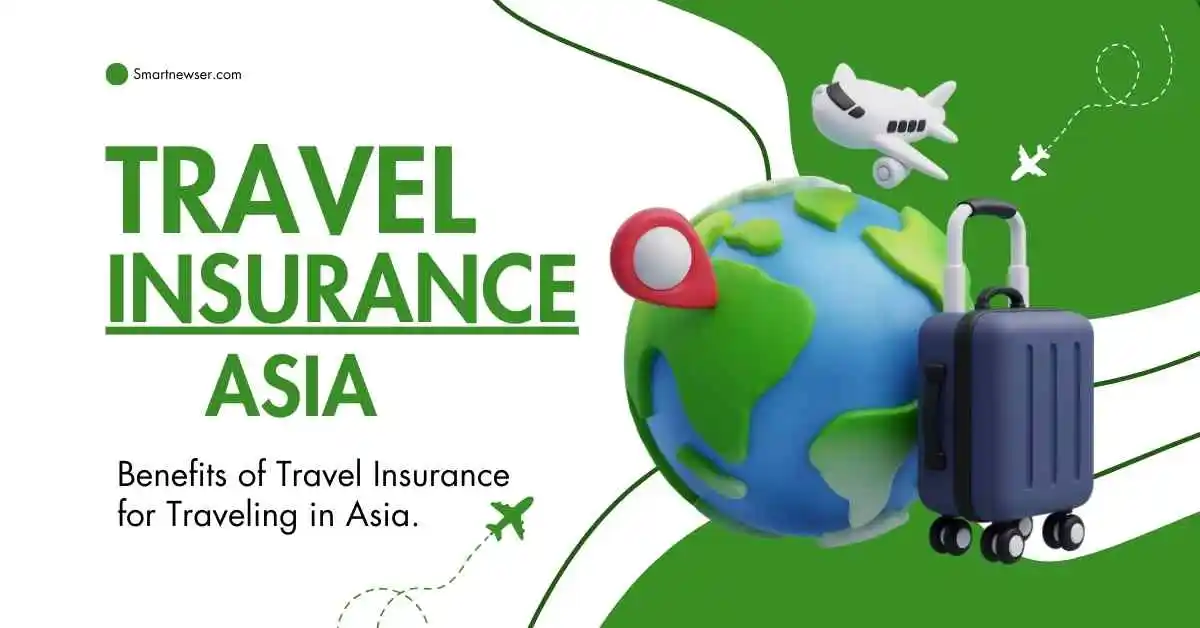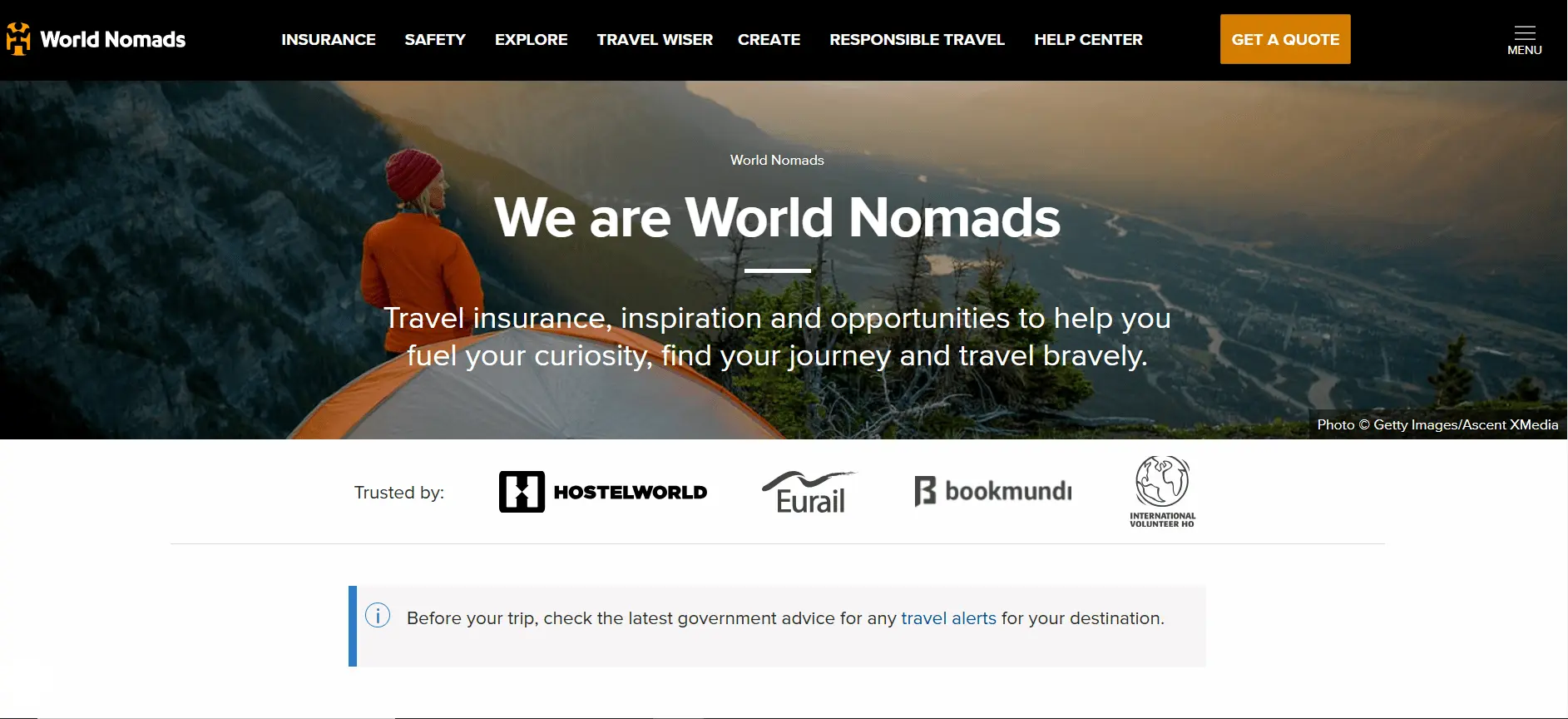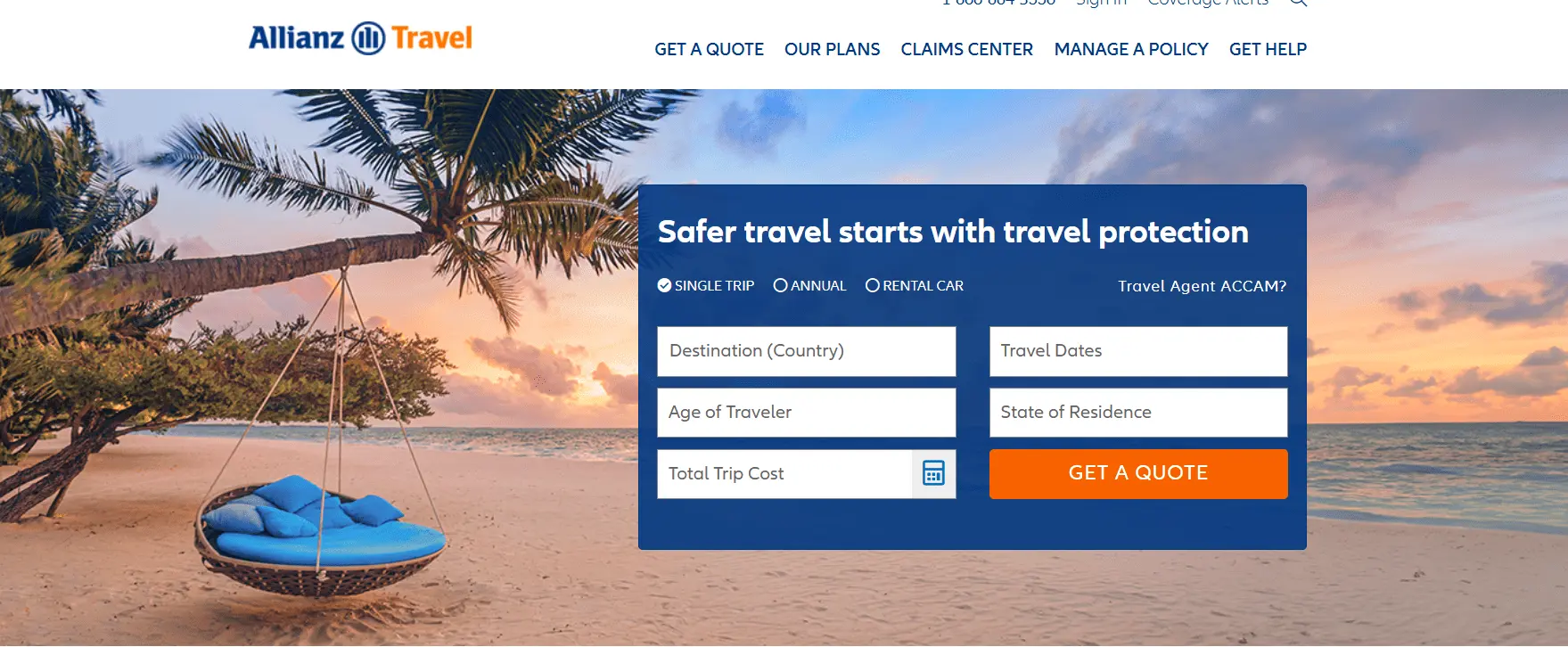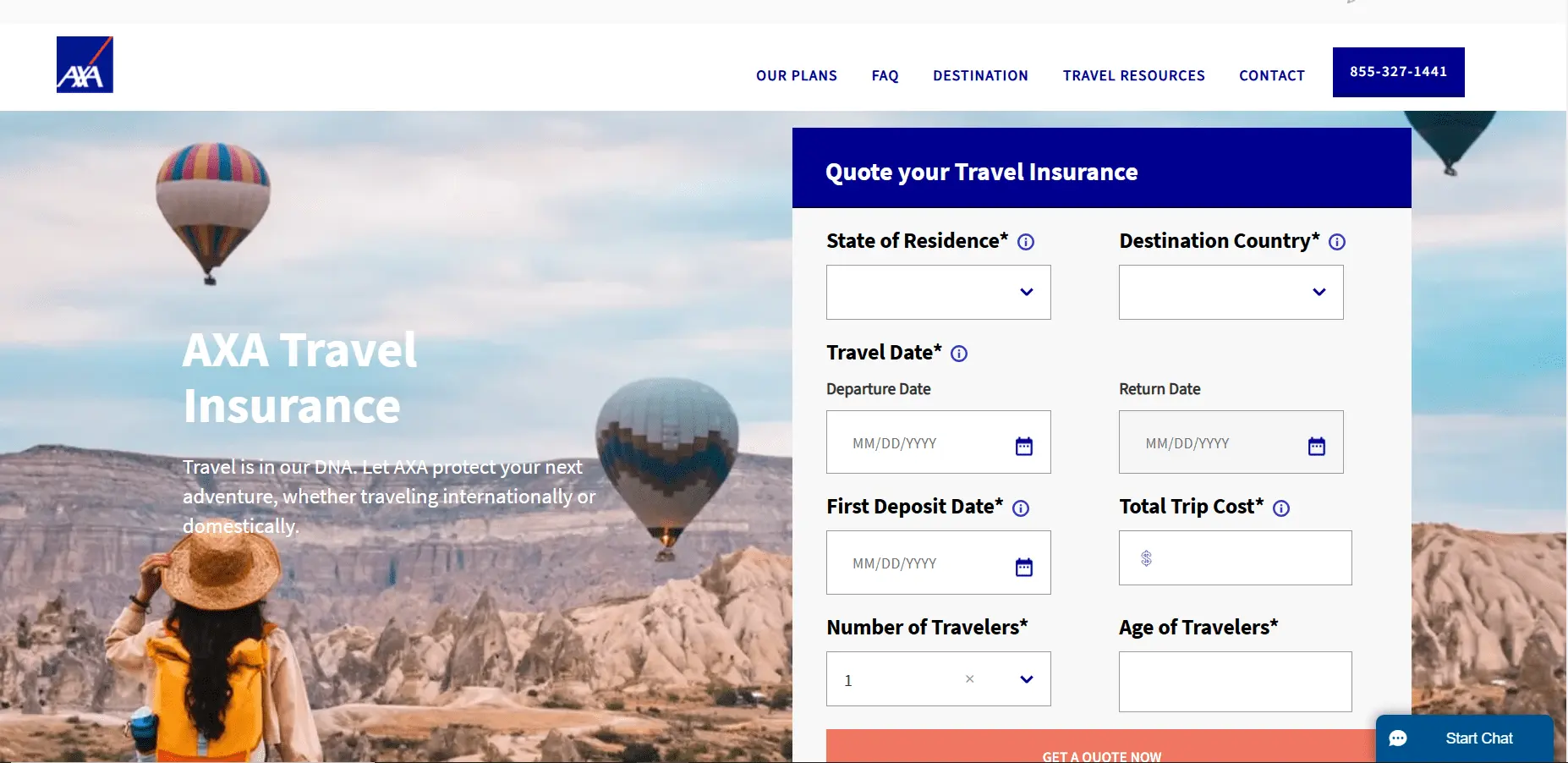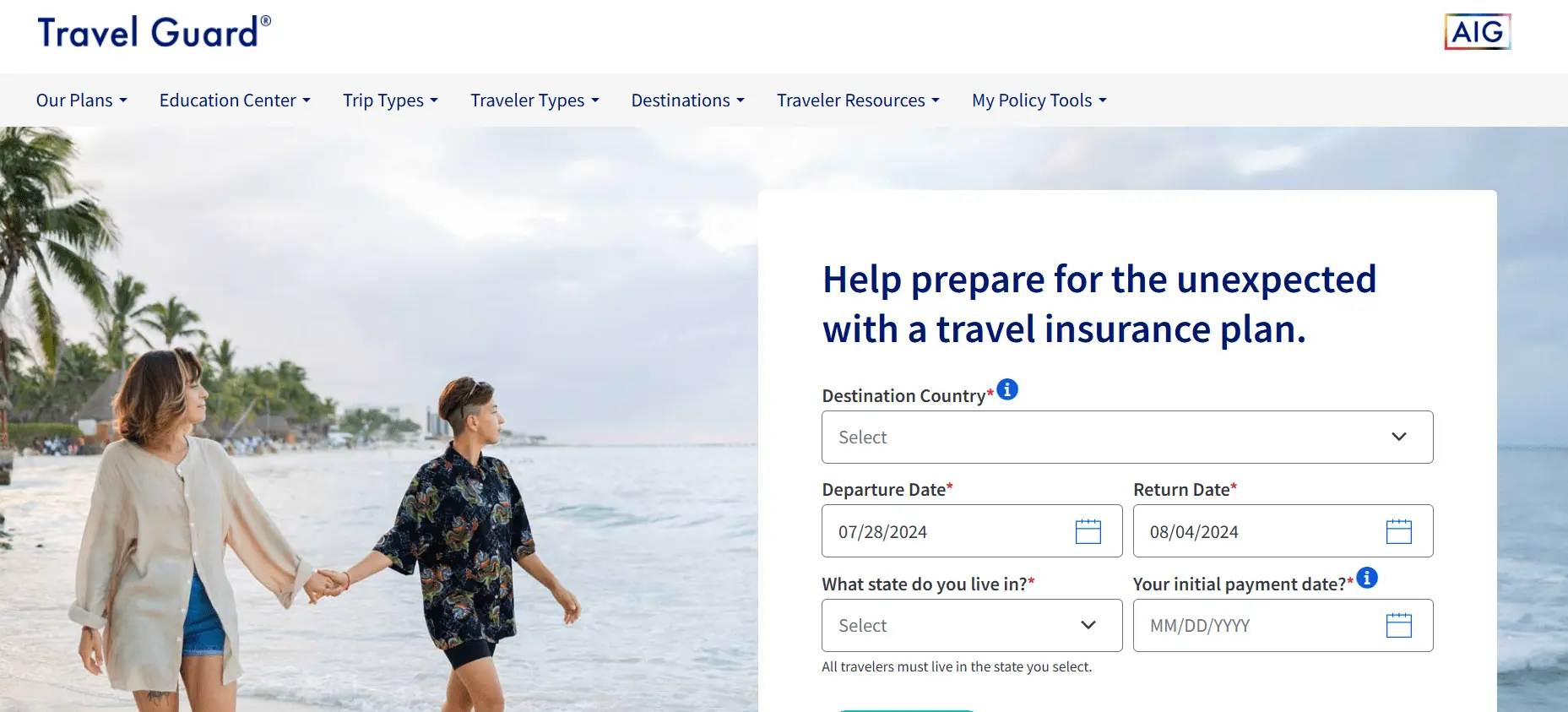Travel Insurance for Asia- Traveling through Asia is an adventure filled with diverse cultures, breathtaking landscapes, and unforgettable experiences. But with any journey, especially one through a vast and varied continent like Asia comes a level of unpredictability. This is where travel insurance steps in, acting as your safety net.
Whether you’re exploring bustling cities, serene beaches, or remote mountains, having travel insurance ensures you’re prepared for the unexpected. Let’s dive into why travel insurance is crucial for your Asian escapade.
Why You Need Travel Insurance in Asia
1. Unpredictable Situations
Life is unpredictable, and travel is even more so. From missed flights to natural disasters, a myriad of unforeseen events can disrupt your travel plans. Travel insurance provides coverage for these unpredictable situations, ensuring you’re not left stranded or out of pocket.
2. Medical Emergencies
Asia is home to some world-class healthcare facilities, but accessing these services can be expensive, especially for tourists. Travel insurance covers medical emergencies, from minor illnesses to severe injuries, so you can receive the necessary care without worrying about hefty bills.
3. Trip Cancellations and Interruptions
Plans change, and sometimes you might need to cancel or cut short your trip due to personal emergencies, political unrest, or natural calamities. Travel insurance compensates for these cancellations or interruptions, safeguarding your investment in your trip.
Types of Travel Insurance
1. Comprehensive Travel Insurance
Comprehensive travel insurance is an all-encompassing package, offering extensive coverage that includes medical emergencies, trip cancellations, lost baggage, and more. This type of insurance is ideal for travelers who want complete peace of mind, knowing that most potential issues are covered.
2. Medical Travel Insurance
Medical travel insurance focuses specifically on health-related issues. It covers expenses for hospital stays, doctor visits, and emergency medical treatments. This type of insurance is essential for destinations where healthcare costs are high, ensuring you receive the necessary medical care without financial strain.
3. Evacuation Insurance
In case of severe medical emergencies or natural disasters, evacuation insurance covers the cost of being transported to a safe location or back home.
4. Baggage and Personal Belongings Insurance
Lost, stolen, or damaged baggage can ruin your trip. This insurance covers the cost of your belongings, providing funds to replace essential items.
Travel Insurance for Different Types of Travelers
Traveling is an enriching experience that exposes us to new cultures, landscapes, and adventures. Whether you’re embarking on a solo journey, planning a family vacation, or traveling for business, one essential aspect that should never be overlooked is travel insurance.
This guide explores the nuances of travel insurance tailored to various types of travelers, ensuring you make informed decisions to safeguard your journeys.
Types of Travelers
1. Solo Travelers
Solo travelers face unique risks and challenges that necessitate specific insurance coverage. Whether you’re backpacking across Europe or exploring remote destinations, solo traveler insurance typically includes comprehensive medical coverage and emergency assistance tailored to individual needs.
2. Family Travelers
Traveling with family requires careful planning, including adequate insurance coverage for all members. Family travel insurance offers benefits like coverage for children, trip interruption protection, and reimbursement for prepaid expenses in case of cancellation.
3. Business Travelers
Business travelers often have different insurance needs, focusing on coverage for business-related equipment, trip cancellation due to work commitments, and emergency medical services tailored to frequent travel schedules.
4. Adventure Travelers
Adventurous souls seeking thrill and adrenaline in activities like skiing, scuba diving, or mountain climbing require specialized adventure travel insurance. This coverage addresses risks specific to adventurous pursuits, such as medical evacuation from remote areas and equipment loss or damage.
5. Senior Travelers
Senior travelers may require specialized insurance plans that account for age-related health concerns and potential medical emergencies abroad. These plans often offer higher coverage limits for medical expenses and include provisions for pre-existing conditions.
Choosing the Right Travel Insurance
Planning a trip, whether for leisure or business, involves numerous decisions. One of the most crucial, yet often overlooked, decisions is selecting the right travel insurance. While it may seem like an additional expense, travel insurance can provide invaluable peace of mind and financial protection against unforeseen circumstances. Here’s a comprehensive guide to help you navigate the process and choose the right travel insurance plan tailored to your needs.
1. Understand Your Travel Needs
Before diving into the specifics of travel insurance plans, take some time to assess your individual travel needs. Consider the following factors:
- Destination and Activities: Are you traveling domestically or internationally? Will you be engaging in adventurous activities like skiing or scuba diving?
- Trip Duration: How long will your trip last? Some insurance plans have limitations based on trip duration.
- Health Considerations: Do you have any pre-existing medical conditions that might require special coverage?
- Value of Belongings: Are you carrying valuable items such as electronics or jewelry?
Understanding these aspects will help you narrow down the type of coverage you need.
2. Types of Coverage to Consider
Travel insurance typically offers several types of coverage, each serving different purposes:
- Trip Cancellation or Interruption: This covers non-refundable trip costs if you have to cancel or cut short your trip due to unforeseen events such as illness, injury, or natural disasters.
- Emergency Medical Coverage: Essential for covering medical expenses abroad, including hospital stays, doctor visits, and emergency medical evacuation.
- Baggage and Personal Belongings: Protects against loss, theft, or damage to luggage and personal items during your trip.
- Travel Assistance Services: Provides 24/7 access to assistance services such as emergency travel arrangements, legal assistance, and translation services.
- Accidental Death and Dismemberment: Offers financial protection in case of death or serious injury due to an accident while traveling.
3. Evaluate Policy Limits and Exclusions
When comparing travel insurance policies, pay attention to policy limits, deductibles, and exclusions. Key considerations include:
- Coverage Limits: Check the maximum benefit amount for each type of coverage. Ensure it meets your potential expenses.
- Deductibles: Understand how deductibles apply to different types of claims. A higher deductible often means lower premiums.
- Exclusions: Be aware of situations or activities not covered by the policy, such as extreme sports or pre-existing medical conditions.
4. Compare Quotes and Reviews
Shopping around is crucial when choosing travel insurance. Obtain quotes from multiple reputable insurers and compare coverage details side by side. Look beyond price alone—consider insurer reputation, customer reviews, and the ease of claims processing. Reliable customer service and a responsive claims process can make a significant difference in stressful situations abroad.
Read the Fine Print
Before purchasing a policy, carefully read the terms and conditions. Pay attention to:
- Coverage Details: Ensure the policy covers all the specific risks and activities relevant to your trip.
- Policy Exclusions: Understand what the policy does not cover, including pre-existing conditions, risky activities, or certain destinations.
- Claims Process: Familiarize yourself with the steps and requirements for filing a claim. Keep copies of all relevant documents handy during your trip.
Top Providers of Travel Insurance for Asia
When planning a trip to Asia, having reliable travel insurance is essential for peace of mind and financial protection. Here are some of the top providers of travel insurance specifically tailored for travel in Asia:
1. World Nomads
World Nomads is well-known for its comprehensive coverage and flexibility. They offer a range of plans that cover medical expenses, trip cancellations, and even adventure activities. Their 24/7 emergency assistance and easy online claims process make them a favorite among travelers.
Allianz Global Assistance is another top choice, known for its extensive coverage options and strong financial stability. They provide coverage for medical emergencies, trip interruptions, and lost luggage, among other things. Their plans are customizable to suit different travel needs and budgets.
AXA offers a variety of travel insurance plans that cater to different types of travelers. Their coverage includes medical expenses, trip cancellations, and personal belongings. AXA is known for its efficient claims process and worldwide customer support.
4. IMG (International Medical Group)
IMG is a popular choice for travelers looking for comprehensive medical coverage. Their plans include emergency medical evacuation, trip interruption, and coverage for pre-existing conditions. IMG also offers 24/7 customer service to assist travelers in case of emergencies.
Travel Guard by AIG provides robust coverage options for travelers heading to Asia. Their plans include emergency medical coverage, trip cancellations, and coverage for lost or delayed baggage. They are known for their reliable customer service and extensive global network.
Note – When choosing travel insurance for your trip to Asia, it’s important to consider your specific needs and travel plans. Make sure to read the policy details carefully and understand what is covered and what is not. With the right travel insurance, you can enjoy your adventure in Asia with confidence and peace of mind.
Tips for Buying Travel Insurance
Planning a trip can be exhilarating, but amid the excitement of choosing destinations and packing bags, one crucial detail often overlooked is travel insurance.
Whether you’re embarking on a solo adventure, a family vacation, or a business trip, having the right travel insurance can provide peace of mind and financial security. Here’s a handy guide to help you navigate the ins and outs of buying travel insurance.
1. Start Early, Compare Widely
Don’t leave travel insurance as an afterthought. Start researching and comparing policies as soon as your trip is planned. Insurance coverage can vary significantly between providers, so it pays to shop around. Look beyond just the price – consider coverage limits, exclusions, and the reputation of the insurer.
2. Understand Your Needs
Before you dive into the details of insurance policies, take stock of your specific needs. Are you traveling abroad or domestically? Do you have pre-existing medical conditions? Will your trip involve adventurous activities? Understanding these factors will help you choose a policy that suits your circumstances.
3. Check What’s Covered
Not all travel insurance policies are created equal. Read the fine print to understand what’s covered and what’s not. Common coverage includes trip cancellation or interruption, medical emergencies, lost luggage, and travel delays. If you’re unsure about certain coverage areas, ask the insurer for clarification.
4. Assess Medical Coverage
Healthcare costs abroad can be exorbitant, so medical coverage should be a top priority. Ensure your policy covers medical emergencies, hospitalization, and medical evacuation to your home country if needed. Declare any pre-existing conditions upfront to avoid complications later.
5. Evaluate Trip Cancellation Benefits
Life is unpredictable, and plans can change unexpectedly. Trip cancellation coverage reimburses you for non-refundable trip expenses if you have to cancel due to unforeseen events like illness, natural disasters, or even job loss. Make sure the reasons covered align with potential risks for your trip.
6. Consider Additional Coverage
Depending on your travel plans, additional coverage might be worth considering. This could include rental car damage, adventure sports coverage, or coverage for high-value items like electronics. Tailor your policy to match the activities and risks involved in your trip.
7. Look for 24/7 Assistance
Emergencies don’t keep office hours, so opt for a policy that offers 24/7 emergency assistance. This could be invaluable if you find yourself in need of medical advice, emergency evacuation, or assistance with lost travel documents while abroad.
8. Read Reviews and Get Recommendations
Word of mouth can be a powerful tool when choosing travel insurance. Read reviews from other travelers to gauge customer satisfaction and claims processing efficiency. Additionally, seek recommendations from friends, family, or travel forums for reputable insurers they’ve had positive experiences with.
9. Disclose All Relevant Information
Honesty is crucial when applying for travel insurance. Disclose all relevant information accurately, including pre-existing medical conditions and planned activities. Failure to do so could invalidate your policy or lead to denied claims if issues arise related to undisclosed information.
10. Review and Update Regularly
Your travel plans and circumstances may change over time, so review your insurance needs periodically. Update your policy as necessary to ensure you have adequate coverage for each trip you take.
By following these tips, you can navigate the complexities of buying travel insurance with confidence. Remember, the right policy isn’t just about finding the cheapest option, but rather one that provides comprehensive coverage tailored to your unique travel needs. Bon voyage!
How to Make a Travel Insurance Claim: A Step-by-Step Guide
Traveling can be an exhilarating experience filled with new sights, cultures, and adventures. However, unforeseen events like lost luggage, medical emergencies, or trip cancellations can sometimes disrupt our plans. This is where having travel insurance becomes invaluable. It provides peace of mind and financial protection when things don’t go as planned.
Understanding Your Travel Insurance Policy
Before you embark on your journey, it’s crucial to familiarize yourself with the details of your travel insurance policy. Different policies cover different events, so knowing what is and isn’t covered will guide you through the claims process more smoothly.
Steps to Making a Travel Insurance Claim
Keep All Relevant Documentation: From the moment an issue arises, such as a medical incident or a delayed flight, keep all relevant documents. This includes receipts, medical reports, police reports (in case of theft or loss), and any other paperwork that supports your claim.
1. Contact Your Insurance Provider: Notify your insurance provider as soon as possible after the incident occurs. Most insurance companies have a 24/7 hotline for emergencies. Provide them with a brief overview of what happened and ask them for specific instructions on how to proceed with your claim.
2. Fill Out Claim Forms: Your insurance provider will likely require you to fill out a claim form. This form gathers essential details about the incident, such as dates, locations, and descriptions of what occurred. Be thorough and accurate when completing this form to avoid delays in processing your claim.
3. Submit Supporting Documents: Alongside the claim form, submit all supporting documents that validate your claim. This may include copies of your travel itinerary, proof of purchase for lost or stolen items, medical bills, and any other documentation your insurer requests.
4. Follow-Up: After submitting your claim, stay proactive by following up with your insurance provider. Inquire about the status of your claim and ask if there is any additional information they require to expedite the process.
5. Review the Outcome: Once your claim has been processed, carefully review the outcome provided by your insurance company. They will inform you whether your claim has been approved and the amount, if any, that will be reimbursed.
Tips for a Smooth Claim Process
- Document Everything: Keep a record of all interactions with your insurance provider, including dates, times, and names of representatives you speak with.
- Be Prompt: Notify your insurer and submit your claim promptly to avoid any potential issues or complications.
- Be Honest and Accurate: Provide truthful and accurate information throughout the claims process to ensure your claim is processed smoothly and fairly.
Making a travel insurance claim doesn’t have to be daunting. By understanding your policy, promptly reporting incidents, and providing thorough documentation, you can navigate the process with confidence. Remember, the purpose of travel insurance is to protect you during unforeseen events, so don’t hesitate to utilize it when needed. Safe travels!
Case Studies (Travel Insurance in Asia)
- Medical Emergency in Thailand – A traveler suffered a severe allergic reaction in Thailand. Thanks to their travel insurance, the medical bills were covered, and they received the necessary treatment without financial stress.
- Lost Baggage in Japan – A tourist’s luggage was lost en route to Japan. Their travel insurance covered the cost of essential items, allowing them to continue their trip smoothly.
- Trip Cancellation Due to Political Unrest in Hong Kong – A family had to cancel their trip to Hong Kong due to unexpected political unrest. Their travel insurance reimbursed the non-refundable expenses, ensuring they didn’t lose the money they had invested in their trip.
Frequently Asked Questions (FAQs)
Q1. Do I really need travel insurance for Asia?
Yes, travel insurance is essential for traveling in Asia due to the potential for medical emergencies, trip disruptions, and other unforeseen events.
Q2. What does travel insurance typically not cover?
Common exclusions include pre-existing medical conditions, certain adventure sports, and incidents related to alcohol or drug use.
Q3. Can I buy travel insurance after I’ve started my trip?
Yes, some providers allow you to purchase travel insurance after your trip has started, but coverage might be limited compared to pre-trip policies.
Q4. How much does travel insurance for Asia cost?
The cost varies based on factors like the length of your trip, your age, and the level of coverage. On average, it can range from 4-10% of your total trip cost.
Q5. How do I choose the best travel insurance plan?
Assess your needs, compare different plans, read reviews, and ensure the policy covers all potential risks and activities planned for your trip.
Conclusion
Traveling through Asia offers incredible experiences, but it’s crucial to be prepared for the unexpected. Travel insurance provides the safety net you need to enjoy your journey without worrying about potential mishaps. From medical emergencies to lost baggage and trip cancellations, a good travel insurance policy covers it all. So, assess your needs, choose the right plan, and travel with peace of mind knowing you’re protected.
Final Tips for Travelers
- Always read the fine print of your policy.
- Keep a copy of your insurance details with you while traveling.
- In case of an emergency, contact your insurance provider immediately.
By taking these precautions, you can focus on enjoying your adventure across Asia, knowing that you’re well-protected.
